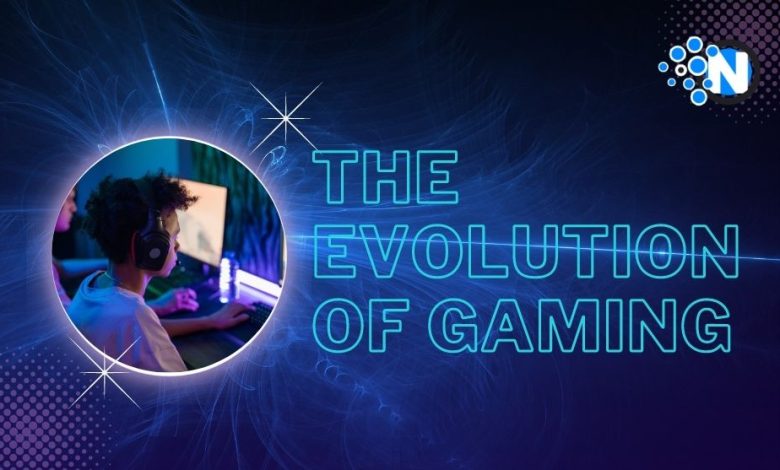The Evolution of Gaming – From Arcade Cabinets to Virtual Reality

Video games and the gaming industry have come a long way. From the early prototype versions of the video games we knew then to the billion-dollar industry it is today, anyone with an electronic device, be it a mobile phone, TV, console, tablet, or computer has had a chance to play at least one video game.
As gaming technology has evolved, it has influenced industries such as the gambling industries and impacted the design of new online casinos like those at casinopånett.org, giving gamers a few hours away from the realities of the world.
The History of Gaming
Through the years, different technologies and genres have emerged to meet the needs of different gamers, giving gaming quite an interesting past. So, let us explore the various technological steps the gaming industry has taken to be what it is today.
Tennis For Two
While most history of gaming charts believe gaming started in 1972, we cannot disregard the Tennis For Two game that was introduced in October 1958 by the Brookhaven National Laboratory. People stood in line to play this electronic tennis game that had a controller for each player connected to a computer. The players saw a two-dimensional view of the tennis court on an oscilloscope screen making it the first video game ever made.
Spacewar
Spacewar was a space warfare computer game designed by MIT students in 1962. The game was made possible by a contribution by the Digital Equipment Corporation (DEC), who donated the computer used in the creation of the game. This mini-computer was controlled via a keyboard connection and a cathode-ray tube display. The Java-based game was designed for a PDP-1 emulator.
Designing the first edition of the game took the students roughly 200 hours to fully complete. In the game, players could pilot a spacecraft and launch torpedoes and missiles against their opponents. Spacewar was a multiplayer game, making it one of the first ever to be created.
The Arcades
Not long after, in 1971 to be precise, Nolan Bushnell and Ted Dabney designed Computer Space, an electronic game based on Spacewar. The arcade game involved flying a rocket ship through space while fighting two flying saucers at the same time. The game debuted at Chicago’s Music Operators of America trade show but failed to launch and did not pick up commercially.
The two scientists, Bushnell and Dabney left Computer Space and founded Atari, which then launched Pong the next year. Pong was based on the Magnavox Odyssey, a table tennis game that was also released in the same year.
Pong, an electronic game with two paddles and a ball played on a screen. The first Pong arcade machine was installed in a local bar and became an instant hit, making it the first commercialized game in America.
Over the years, arcade games have evolved to become more than just simple coin-operated games and are now advanced video games built with the best arcade cabinets.
Home consoles
As the arcade space was blowing up, consoles were also becoming a hit in homes. The Magnavox Odyssey, the table tennis game mentioned above that inspired the creation of Pong is actually one of the first home consoles ever designed. Magnavox Odyssey was designed by Ralph Baer for those with television sets and even included games and accessories, that were sold separately.
In the 1980s, the video game industry blew up and games such as Space Invaders saturated the market causing it to crash.
The GameBoy
A few years later, the video game market pieced itself up again, introducing handheld games. In 1989, Game Boy, designed by Nintendo was the most popular handheld game.
The device included a game of Tetris, interchangeable cartridges, and could run for 30 hours using two AA batteries. Some of the most iconic handheld games include Mario, Zelda, Donkey Kong, Street Fighter, and Crash Bandicoot.
Personal Computers
The arrival of personal computers such as the Commodore Vic-20 and the Apple II boosted the rise of video games. These were affordable machines with powerful processors that revolutionized gaming due to the complex games they offered. With the rise in personal computers, creators continued to design games like Doom that would push boundaries and influence PC gaming as we know it today.

PlayStation and Xbox
The Game Boy’s popularity paved the way for the next generation of consoles. When Sony released the PlayStation One in the early 1990s, the console swiftly rose to become the most popular system after the GameBoy. This was mainly due to the vast range of games PlayStation provided. Throughout the 90s, PlayStation One sold more than 100 million copies, and its massive success set the stage for the launch of PlayStation 2.
Soon after, Microsoft entered the market with the Xbox and between 2005 and 2006, the PlayStation 3, Nintendo Wii, and the Xbox 360, moved gaming to its next stage-high-definition gaming.
Mobile gaming
Quietly in the background, mobile gaming had started to peak and in 2008, Apple launched the App Store, which allowed game designers to showcase different genres and titles. This led to a surge in mobile free-to-play video games, creating mobile game crazes like Angry Birds and Candy Crush.
Virtual reality
Though there were early attempts at virtual reality (as early as 1838 with the first stereoscope), it is not until the mid-1980s that we see it fully when Jaron Lanier, developed a head-mounted display and gloves as the gear for what we know as virtual reality today.
In 1989, NASA designed a VR sim used to train astronauts and by the early 90s virtual reality devices for the public were available in arcade games and machines. Players were able to experience VR through VR goggles and could even participate in multiplayer gaming. As VR boomed, it s not until recently that we have seen what it can truly do.
What to Expect
The gaming industry has advanced in many different areas. Looking at its history, we can see how the technology has evolved to include aspects such as cloud gaming. While gamers previously relied on disks to play, cloud gaming has opened up gaming to allow anyone to access different games produced by different game designers and consoles.
Not only that but gaming has now become more of a social endeavor. With the creation of multi-player games, and various 3rd party infrastructures like chat, and esports, gamers have endless opportunities to socialize and network with like-minded peers as they enjoy games. Players can also take a professional stance and earn from gaming.
With the introduction of the Metaverse, cloud gaming will likely experience a boost as players interact and build their own social spaces.
Final Thoughts
Understanding the history of video games helps us to better chart the next steps in gaming. We can see just how far the industry has come and as technology advances, look forward with great expectations.




